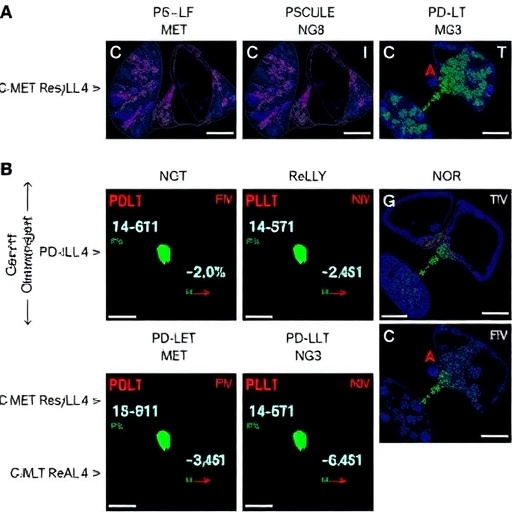
Credit: (Texas A&M AgriLife photo by Kathleen Phillips)
COLLEGE STATION — A turfgrass disease that looked like an ink spill on many southern golf courses has been identified and all but blotted out, according to a plant pathologist with the Texas A&M AgriLife Extension Service.
The disease, which occurs on short-cut Bermuda and Zoysia grasses, had golf course superintendents from Texas to Florida "scared," Dr. Young-Ki Jo said, because it ruined the aesthetic looks of their fairways and greens, which could have some players teed-off.
Ultimately, through lab tests and DNA sequence comparisons, the researchers found the pathogen was a new species of fungal disease, which they named Curvularia malina. Their finding was published in a recent edition of the journal Mycologia.
Jo and his counterpart Dr. Maria Tomaso-Peterson at Mississippi State University independently were examining samples of the infected grasses from various courses and, when they compared notes, agreed that the responsible pathogen was not known to scientists.
"Fungi is a common culprit of turf disease. So we isolated and cultured them for identification," Jo said.
They also poured over reports of similar fungal diseases and found similarities on various courses in Texas, Mississippi, Alabama, Tennessee, Florida and even in Japan and China, yet it remained unnamed and with few details about its life cycle.
"If we don't know the biology of a fungus, there is no management protocol," Jo explained. "So of course the golf course superintendents' first response is to be scared that the disease will take over the course."
In Texas alone, there are some 1,000 golf courses with a total of about 115,000 acres, according to the Texas Water Resources Institute.
Jo said it's costly to apply fungicides, especially if there is no idea whether it will work. With about 40 acres per course in fairways, putting greens and tees, the cost could easily reach $5,000 to spray a product that might not even work against the fungus. Besides, because it was a previously unknown species, no product was labeled for legal use against the fungus.
"You can spend a lot of time and money and still not manage a disease," he said. "Proper diagnosis is a really critical thing."
With extensive testing, and by comparing results from scientific databases online, the team was able to sequence and examine three genes and place the fungi in the Curvularia group. They named the new species malina, from the Sanskrit word for "dirty or stained," because of its dark brown to black splotches in the turf.
In further field tests, the team found a fungicide that can be used preventively or to treat infected areas at the time of year it is most likely to appear, which is on short-cut grass in the more humid seasons of southern spring and fall.
"The fungi is only observed on golf course fairways, putting greens or tees," Jo said. "It may be in grass with longer mowing heights but the distinctive symptoms just don't show up there."
Though grass with the inky disease turns dark with leaves that get mushy, the condition clears up with drier summer weather, he said. It commonly is spread possibly by mowing equipment or with aeration, a common management technique that pulls plugs of grassy soil out to help the turf get water and nutrients better.
"Luckily this fungal disease does not completely kill the grasses. The roots are still alive, and the crown is still alive, so if you apply proper treatments the the grass will recover," the plant pathologist said. "But there can be lot of black spots, which really reduce the aesthetic quality and playability of the turf.
"We don't have the knowledge or ability to eliminate the fungi, but we can manage the disease under the threshold levels that cause turf damage," he said. "It's really important to have a proper diagnosis, because once you know what the disease is, the management practice can be totally different. Knowing the culprit is the first step."
###
Media Contact
Kathleen Phillips
[email protected]
979-845-2872
@texasagwriter
http://today.agrilife.org





